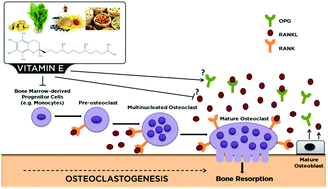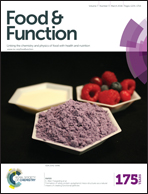Vitamin E suppresses ex vivo osteoclastogenesis in ovariectomized rats
Abstract
Postmenopausal osteoporosis may be caused, in part, by oxidative stress and inflammation. Vitamin E is a strong antioxidant which has been shown to have anti-inflammatory and bone-protective effects. The objective of this study was to investigate the effects of various doses of supplemental vitamin E on osteoclastogenesis in ovariectomized rats. Sixty 12-month-old female Sprague-Dawley rats were sham-operated (Sham) or ovariectomized (Ovx; 4 groups) and fed a diet containing basal levels of vitamin E (75 mg D-α tocopherol acetate per kg diet) for 220 days. Rats in three of the Ovx groups were given supplemental doses of vitamin E (300, 525, and 750 mg D-α tocopherol acetate per kg diet) for the last 100 days. Femoral bone marrow cells were isolated, cultured, and osteoclasts were counted and normalized to 1000 total bone marrow cells. Blood monocyte and lymphocyte counts were also determined. Osteoclast number was significantly higher in the Ovx control group and was suppressed by all three doses of vitamin E, although more effectively in the Ovx group that received 300 mg per kg diet vitamin E. Additionally, vitamin E suppressed the Ovx-induced increase in monocyte and lymphocyte production. The results of this study suggest that vitamin E supplementation suppresses osteoclastogenesis, possibly by inhibiting monocyte and lymphocyte production.


 Please wait while we load your content...
Please wait while we load your content...